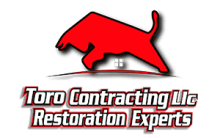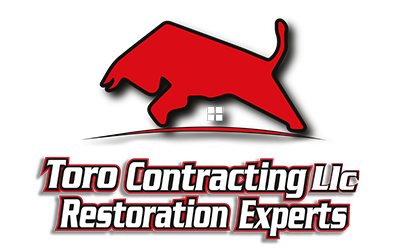In this article, you’ll discover why your roof plays a crucial role in your home’s energy efficiency. We’ll explore practical strategies and materials used in energy-efficient roofing, showing you how these choices can reduce your cooling expenses while keeping your living spaces comfortable. Whether you’re building a new home or considering a roof upgrade, learning about energy-efficient roofing save on bills and stay cool will empower you to make impactful decisions that benefit both your wallet and the environment.
Get ready to dive into the science behind reflective materials, insulation, and ventilation techniques. You’ll also learn tips on selecting the best roofing options tailored to your climate and lifestyle. By the end of this guide, you’ll not only understand how energy-efficient roofing save on bills and stay cool but also how to implement these solutions effectively. Let’s transform your roof into a smart protector against heat and high costs!
Key Takeaways
Roof Matters: Up to 35% of a home’s cooling energy can escape through the roof—upgrading to an energy-efficient system directly lowers your air-conditioning costs.
Reflective Materials: “Cool roof” coatings and light-colored shingles reflect more sunlight, reducing roof surface temperatures by up to 30%.
Insulation & Ventilation: Combining high-R-value insulation with proper attic ventilation prevents heat buildup and maintains stable indoor temperatures.
Smart Material Choices: Options like metal roofing, composite tiles, or phase-change materials each offer unique advantages in durability, reflectivity, and thermal control.
Long-Term Savings & Sustainability: Though upfront costs may be higher, energy-efficient roofing pays for itself over time through lower utility bills, reduced carbon emissions, and potential rebates or tax incentives.
Why Energy-Efficient Roofing Is More Important Than You Think
In today’s world, where energy costs are soaring and environmental concerns are mounting, energy-efficient roofing has emerged as a game-changer for homeowners and businesses alike. But what exactly is energy-efficient roofing, and why should you care about it? Simply put, energy-efficient roofing refers to roofing systems and materials designed to reduce the amount of energy needed to cool or heat a building. By improving insulation, reflecting sunlight, and minimizing thermal transfer, these roofs play a crucial role in saving money on utility bills while keeping indoor environments cool and comfortable.
The importance of energy-efficient roofing cannot be overstated. According to the U.S. Department of Energy, nearly 25% to 35% of the energy used for cooling a building is lost through the roof, making it one of the most critical areas to address for energy conservation. By installing an energy-efficient roof, homeowners can reduce their cooling costs by up to 15%, which translates into substantial annual savings. Moreover, the Environmental Protection Agency (EPA) highlights that such roofing options can significantly lower carbon footprints, reducing greenhouse gas emissions associated with electricity production.
Consider the example of a family in Arizona who upgraded their traditional asphalt shingle roof to a cool roof coated with reflective materials. Before the upgrade, their summer electricity bills averaged about $300 per month due to the intense heat. After the energy-efficient roofing installation, their bills dropped to nearly $250 per month , a saving of $600 over the peak cooling season alone. Not only did the lower energy bills benefit their wallets, but the house also stayed noticeably cooler, enhancing overall comfort during the sweltering summer months.
Energy-efficient roofing is more than just a smart financial decision; it is a step toward sustainable living that benefits both individuals and the planet. As energy costs continue to rise and climate change effects become more pronounced, making the switch to an energy-efficient roof might be one of the best investments you can make for your home and future.
How to Apply Energy-Efficient Roofing Step by Step
If you’re ready to reduce your energy bills and keep your home comfortable year-round, understanding how to apply energy-efficient roofing is essential. This step-by-step guide will walk you through the process , from selecting the right materials to installation and maintenance , ensuring you maximize the benefits of a cool, cost-saving roof.
- Assess Your Current Roofing and Energy Needs
Before making any changes, analyze your home’s current roofing condition and energy consumption:
– Inspect your roof’s age and condition: Older roofs may not be energy-efficient and could require replacement rather than an upgrade.
– Evaluate your energy bills: Look for patterns or spikes in cooling costs, which energy-efficient roofing can dramatically reduce.
– Consider your climate: The benefits of energy-efficient roofing are more pronounced in hotter climates but can help year-round.
– Identify shading and ventilation: Proper ventilation and shading impact roof performance, so take note of nearby trees or roof vents.
This initial assessment will inform your choices and help you tailor your approach.
- Choose the Right Energy-Efficient Roofing Material
Selecting the appropriate roofing material is a cornerstone of energy efficiency. Here are popular options to consider:
– Cool Roof Coatings: Special reflective paints that reflect more sunlight and absorb less heat.
– Metal Roofing with Reflective Finishes: These reflect solar radiation and often have high durability.
– Clay and Concrete Tiles: Naturally have reflective properties and thermal mass that cool the home.
– Asphalt Shingles with Cool Roof Technology: Enhanced with reflective granules to boost energy efficiency.
– Green Roofs: Vegetation layers that provide insulation and absorb heat.
Each material has distinct cost, durability, and reflectivity characteristics. For example, metal roofs with reflective coatings can reflect up to 70-80% of solar energy, significantly reducing cooling loads.
- Calculate Potential Savings and ROI
Understanding your potential savings can strengthen your commitment to upgrading.
– Estimate energy savings: Use online calculators from reputable sources or consult with roofing experts.
– Factor installation costs versus bill reductions: Energy-efficient roofs may have higher upfront costs but often pay back through lower energy use.
– Consider utility rebates and tax incentives: Many governments offer credits for energy-efficient upgrades, which improve ROI.
A quick illustration: If your average cooling bill is $150 per month and an energy-efficient roof cut that by 20%, you save $30 monthly or $360 annually.
- Hire a Qualified Roofing Contractor With Experience in Energy-Efficient Solutions
Not every roofing contractor is versed in energy-saving installations. To ensure the job is done right:
– Verify credentials and experience: Look for certifications or portfolios showcasing energy-efficient projects.
– Request detailed proposals: These should include materials, timelines, and expected energy benefits.
– Ask for references: Past customer feedback can reveal quality and professionalism.
– Discuss ventilation solutions: Proper airflow underneath your roof complements the energy-efficient materials.
A well-trained contractor can integrate components like radiant barriers or insulated sheathing that further enhance efficiency.
- Prepare Your Home and Roof for Installation
Before installation day:
– Clear roofing areas: Remove any obstacles and ensure safe access.
– Protect landscaping and property: Contracting dust or falling debris can affect outdoor spaces.
– Coordinate with your contractor: Confirm schedules and any special requirements.
Preparing well can streamline installation and mitigate surprises.
- Installation of Energy-Efficient Roofing Materials
During installation:
– Follow manufacturer guidelines: Adherence ensures proper performance and warranty validity.
– Incorporate reflective barriers: These enhance heat rejection beneath roofing materials.
– Install proper ventilation: Ridge vents, soffit vents, and attic fans help dissipate heat.
– Seal gaps and leaks: Prevent hot air infiltration that negates energy savings.
A combination of reflective materials and ventilation often yields the best cooling results.
- Post-Installation Maintenance for Optimal Performance
Energy-efficient roofs still require care to maintain their effectiveness:
– Clean reflective surfaces: Dust or debris can reduce reflectivity.
– Inspect for damage or wear: Address cracks, rust, or loose shingles promptly.
– Check ventilation regularly: Blocked vents impede air flow.
– Monitor energy bills: Tracking utilities confirms whether savings meet expectations.
Routine maintenance extends your roof’s lifespan and performance.
By carefully following these steps, you ensure that your energy-efficient roofing project not only saves money on bills but also keeps your home cooler and more comfortable. The key is a thoughtful combination of material selection, skilled installation, and ongoing maintenance , all tailored to your home’s specific needs. Embrace this approach, and you’ll enjoy a smarter, greener roof for years to come.

Tips for Energy-Efficient Roofing to Save on Bills and Stay Cool:
✅ Choose Reflective Roofing Materials: Opt for materials with high solar reflectance to bounce back sunlight, reducing heat absorption and keeping your home cooler.
✅ Ensure Proper Insulation: Adding insulation beneath your roof prevents heat transfer, maintaining a stable indoor temperature and lowering cooling costs.
✅ Ventilate Your Attic: Adequate attic ventilation allows hot air to escape, preventing heat buildup that makes cooling systems work harder.
✅ Install Cool Roof Coatings: Apply reflective coatings that can reduce roof surface temperature by up to 30%, enhancing energy efficiency.
✅ Use Light-Colored Roofing: Lighter colors reflect more sunlight compared to dark roofs, helping to reduce indoor temperatures and energy bills.
✅ Incorporate Green Roofing: Planting vegetation on your roof adds natural insulation and cooling through evaporation, improving energy savings.
✅ Seal Roof Leaks and Gaps: Preventing air leaks reduces unwanted heat gain or loss, optimizing your home’s energy performance.
✅ Regular Roof Maintenance: Keep your roof in top condition to ensure energy-efficient features perform effectively over time.
By focusing on these energy-efficient roofing strategies, you’ll save on bills while enjoying a cooler, more comfortable home all year round.
Key Concepts
Understanding the magic behind energy-efficient roofing is like unraveling the layers of an intricate story where each component plays a vital role in shaping comfort and cost savings. At its core, energy-efficient roofing is more than just a protective shell over a home; it acts as a dynamic barrier against the whims of nature while actively contributing to the regulation of indoor temperatures and energy consumption. To truly appreciate how this roofing transforms a house into an energy-smart haven, it’s crucial to explore several intertwined concepts that form the foundation of this technology.
Thermal Resistance and Insulation: The Roof as a Thermal Shield
Imagine standing in front of a blazing bonfire during a chilly night. If you wear a thick, insulating coat, you don’t feel the full brunt of the fire’s heat, your coat acts as a barrier, regulating the warmth reaching your skin. Similarly, energy-efficient roofing incorporates materials designed to possess high thermal resistance, often measured by the R-value. A roof with high R-value slows down heat transfer from the hot external environment into the cooler interior, much like that cozy coat buffers against the fire’s intense rays.
This concept is foundational because controlling how much heat seeps through the roof helps minimize reliance on cooling systems in summer or heating in winter. Think of insulation as the fortress walls in a medieval castle, steadfastly guarding the precious interiors against external extremes, thus preserving a stable and comfortable environment inside.
Reflectivity: The Power of Light
Another crucial element is solar reflectance, the roof’s ability to bounce sunlight away rather than absorbing it. Imagine wearing a black t-shirt on a sunny day versus a white one. Black absorbs more sunlight and becomes hotter, just as a dark roof tends to soak up heat, turning your attic into a sauna. Energy-efficient roofing often employs reflective coatings or light-colored materials akin to wearing white to reflect the sun’s harsh rays, effectively reducing the heat load on the house.
By reflecting solar energy, these roofs can significantly drop surface temperatures, which directly translates into reduced indoor heat gain. Visualize this like an umbrella on a sunny day; the umbrella itself doesn’t generate cool air, but it shields you from direct sunlight, making your experience much more comfortable.
Ventilation: Breathing Life Into the Roof
Even with insulation and reflectivity, the story isn’t complete without proper ventilation. Think of ventilation as the lungs of a roofing system, enabling the exchange of stagnant hot air trapped beneath the roof with fresh, cooler air from outside. Without ventilation, heat and moisture can build up, deteriorating roof materials and creating an uncomfortable indoor climate.
This airflow not only prolongs the life expectancy of the roofing materials but also aids in maintaining a controlled indoor environment by preventing overheating and reducing reliance on air conditioning. It is comparable to a well-designed living room with ample windows that can be opened to let a refreshing breeze flow through, improving comfort and air quality.
Material Innovation: More Than Meets the Eye
Energy-efficient roofing also leans heavily on material science and innovation. Beyond traditional asphalt shingles, modern roofs may incorporate cool roofing materials such as metal panels, synthetic membranes, or tiles embedded with reflective granules.
These materials are engineered at the microscopic level to enhance reflectance and emissivity (the ability to release absorbed heat). Picture these specialized materials as performers in a grand ballet, each minute action finely tuned to optimize performance, in this case, to guard against heat while enhancing durability and aesthetic appeal.
Moreover, some advanced roofs integrate phase change materials (PCMs) that absorb excess heat during the day and release it slowly at night. This works somewhat like a thermal battery storing energy and using it strategically, thus smoothing temperature fluctuations and improving comfort.
Environmental Impact and Financial Implications: A Symbiotic Relationship
Beyond physical mechanisms, energy-efficient roofing touches upon broader themes such as environmental stewardship and economic prudence. By reducing the amount of energy needed to cool a home, these roofs decrease greenhouse gas emissions linked to electricity generation, painting a picture of eco-conscious living.
This aspect is reminiscent of planting a tree that not only cools your own backyard but also contributes to the planet’s health. Simultaneously, the reduction in utility bills creates a tangible financial benefit, making the roof both a guardian of comfort and a steward of savings.
Together, these concepts build a comprehensive understanding of how energy-efficient roofing transcends the simple function of shelter. It embodies an intelligent, multifaceted system designed to harmonize with environmental forces, optimize human comfort, and deliver financial relief. Through the lenses of thermal resistance, reflectivity, ventilation, material innovation, and environmental impact, one gains a vivid picture of roofing as a crucial player in the quest for sustainable, comfortable, and cost-effective living.
Frequently Asked Questions about Energy-Efficient Roofing: Save on Bills and Stay Cool
❓ What is energy-efficient roofing?
Energy-efficient roofing refers to roofing materials and designs that help reduce energy consumption in a home by reflecting more sunlight and absorbing less heat. This keeps your home cooler and reduces the need for air conditioning, ultimately saving on energy bills.
❓ How does energy-efficient roofing help save money?
By minimizing heat absorption, energy-efficient roofing lowers indoor temperatures. This reduces the workload on your air conditioning system, leading to lower electricity bills. Over time, the savings on cooling costs can offset the initial investment in energy-efficient materials.
❓ What types of materials are considered energy-efficient for roofing?
Common energy-efficient roofing materials include cool roofs made with reflective coatings, metal roofing with reflective finishes, and tiles designed to reflect solar heat. These materials have higher solar reflectance and thermal emissivity compared to traditional roofing options.
❓ Can energy-efficient roofing improve comfort inside my home?
Absolutely. By preventing excess heat from penetrating your roof, energy-efficient roofing helps maintain a more consistent and comfortable indoor temperature during hot weather. This means your home stays cooler without relying heavily on air conditioning.
❓ Is energy-efficient roofing suitable for all climates?
Energy-efficient roofing is most beneficial in warm and sunny climates where cooling costs are high. However, many energy-efficient roofing options also provide insulation that can help retain heat in colder weather, making them versatile choices for various climates.
By choosing energy-efficient roofing, you not only invest in a cooler, more comfortable home but also contribute to reducing your environmental footprint while saving on your utility bills.






